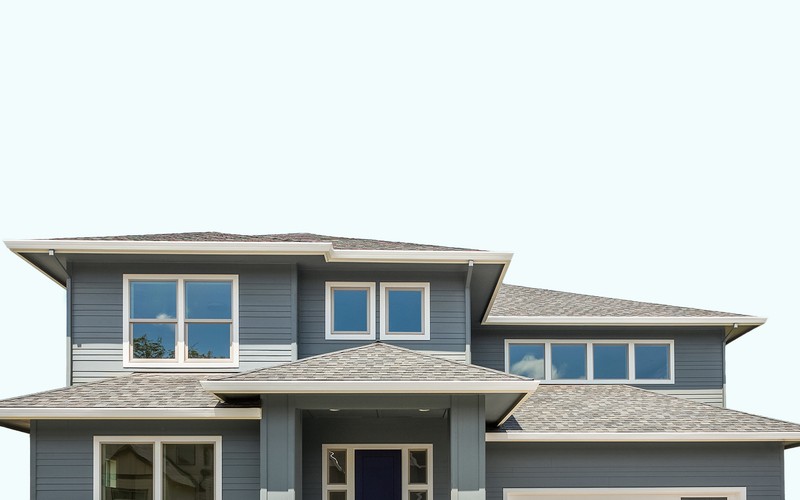Most home buyers in the United States seek financing to purchase their homes. Buyers are familiar with conventional loan programs, which news outlets talk about when discussing interest rates, applications, and affordability. It can discourage those saving up to buy when they hear about high down payments or interest rates. Even when you go into a bank, the lender may not approve you for a loan because it doesn’t meet their qualifications. This can happen in rural areas, where conventional lenders consider extending a loan risky. For those who want to buy in these areas, buying a home seems out of reach.
Luckily there are many alternative loan programs available. One particular program caters directly to buyers seeking residential properties in rural areas. If this applies to you, learn about the USDA loan program and how it can solve your home purchase hurdles.
What is a home loan?
Home loans are an agreement between the borrower and the lender. The borrower agrees to pay back the loan with interest over a specific time frame. This could be done through monthly payments made over 15 or 30 years.
The home itself secures home loans; if borrowers fail to make their agreed-upon payments, lenders can repossess their homes through foreclosure. However, foreclosures are expensive and time-consuming, so their loan programs have specific eligibility requirements for income, credit history, and loan limits.
Multiple home loan options are available for prospective home buyers. A conventional or traditional loan is offered by a private-party lender, such as a bank, mortgage company, or credit union. FHA loans are similar to conventional ones but are insured by the Federal Housing Administration and have more lax income and down payment requirements to qualify. Then there are bridge loans, hard money, VA loans, and other programs. The USDA home loan is one such unique home loan program.
What is a USDA Home Loan?
A USDA Home Loan is a loan offered by the United States Department of Agriculture (USDA) that helps low and moderate-income households purchase homes in eligible rural areas. The official name is “USDA Single Family Housing Guaranteed Loan Program” (SFHGLP). It’s also known as a USDA Rural Development loan or a “Section 502” loan in reference to the Housing Act of 1949.
The program was initiated to help people in low-income, low-populated rural areas achieve the American dream of home ownership. First-time homebuyers and repeat home buyers are equally eligible. The program is also applicable for refinancing properties.
How is a USDA home loan different?
USDA Home Loans offer buyers the same features as traditional loans but with a few key differences. For starters, they’re backed by the USDA, which protects the mortgage lender from loss. The program requires mortgage insurance but offers reduced insurance rates and no private mortgage insurance (PMI) requirements.
It’s specifically designed to help low- to moderate-income buyers move from renting to homeowners, which is why it has such generous loan terms.
Unlike conventional mortgages or FHA home loans, USDA home loans don’t require a down payment to qualify, making them an attractive option for those with limited savings. It’s one of only two programs available for home buyers that offer zero-down financing, the other being VA loans.
You may be eligible to borrow up to 100% of your new home’s appraised value or sale price. Of course, you can provide funds for a down payment if you want to, as it’ll lower your monthly mortgage payment.
In addition to these benefits, interest rates on USDA home loans are generally lower than FHA loans. For example, as of January 1, 2023, the Single Family Housing Direct home loan (for very-low or low-income borrowers) had an interest rate of 4.25% for low-income borrowers, when the 30-year fixed interest rate averaged 6.72% on a conventional loan.
USDA loans are restricted by geography, so they’re not available everywhere. The good news is that 97% of the US map qualifies for the program. While backed by the US Department of Agriculture, you don’t need to buy a farm or homestead. You can use the loan for a single-family home but not a multi-family property like a duplex.
Finally, USDA home loan terms are only locked in as 30-year fixed-rate mortgages. It won’t provide an adjustable rate or a 15-year fixed mortgage. Balloon mortgages won’t qualify for program terms. The loans have no prepayment penalties or negative amortization.
How do you qualify for a USDA Home Loan?
Applicants and properties must adhere to defined qualifications to meet USDA eligibility requirements. This includes income eligibility, credit score requirements, and other factors such as the property’s geographic location. The program is for first-time or repeat home buyers, and no counseling is required.
Applicant requirements
Income eligibility is based on your total household income. To qualify for a USDA home loan, applicants must have an annual income under the 115% of the median income limit for the area they’re buying. The limits are frequently updated and can be found online or by contacting a local lender.
The USDA and the mortgage lender want to see if the borrower has a steady monthly income to show they can afford to purchase the home.
Additionally, applicants must have a credit score of 620 or higher to qualify, but there is some wiggle room with different approved lenders.
In most cases, the borrower also must have a debt-to-income ratio of 41% or less.
Applicants must be US citizens or legal permanent residents.
Home requirements
These loans are only available to purchase homes in rural areas or towns of fewer than 20,000 people. The USDA publishes eligibility maps highlighting the areas of the country that qualify. You might be surprised that some suburban areas meet the rural housing eligibility definition.
Applicants must purchase a single-family property that will be their primary residence (not a vacation home) and occupy it within 60 days of closing. These loans are not for investment properties.
How do you apply for a USDA Home Loan?
Once you’ve determined that you meet the eligibility requirements, the next step is to apply for a USDA home loan.
The USDA backs this program, but it does not lend money. Private lenders have been granted permission to offer USDA-backed mortgages, so you’ll find USDA loans available at major banks, home lenders, and credit unions. Like with any loan, it’s wise to shop around for the best rates from the various approved lenders.
The loan application can be filed online or by visiting your local lender. When applying, you’ll need to provide the lender with the following documents:
- A copy of your credit report
- Proof of income, such as with your tax return or W-2
- Bank statements
- A list of debts and assets
- Documentation that proves you are a US citizen or permanent resident
Your lender will also review your employment history to verify that you have a stable work track record and are more likely to have a consistent income to make loan payments. They will also pull your credit history to ensure you’re a responsible borrower.
Once all the documents have been reviewed, you’ll receive an approval decision from your chosen lender.
If approved, you can proceed with the loan process and work with your lender on closing costs, fees, and other details.
The only exception is the USDA Direct Loan which targets very low-income borrowers. This application process is done directly with the US Department of Agriculture.
USDA loans and mortgage insurance
One of the requirements of borrowers in the program is to carry mortgage insurance. It’s the wheel that keeps the USDA guaranteed loan program available, as the insurance protects the lenders from loss if a borrower defaults on the loan. Without this aspect of the program, fewer lenders would offer USDA loans.
Part of the funding for the insurance is sourced from the borrowers, which is why buying mortgage insurance is required. The insurance fees are paid upfront at closing and on an annual basis. If you don’t want the upfront fee to impact your closing costs, the borrowers can roll it into their loan amount. The upfront guarantee fee is 1% of the home loan amount.
The annual fee is added to the monthly mortgage payment and changes yearly. That’s because it is 0.35% charged on the remaining principal balance each year. Since you’ll be paying down this principal balance each year, so does the annual insurance fee decline.
This mortgage insurance premium is much lower than the private mortgage insurance (PMI) premium paid for FHA or conventional loans. For instance, in 2022, the FHA charged 1.75% upfront and 0.85% each year.
Refinance with USDA Loans
You can refinance a USDA loan to another USDA loan or another loan package like a conventional loan. One of the perks is that the new loan’s interest rate can’t exceed the rate of the prior USDA mortgage.
Refinancing can help you achieve a lower rate and monthly payment. However, when a cash-out refinance is not allowable, except for closing cost expenses paid by the borrower during the refinance. Any unpaid fees, balances, and interest can’t be rolled into the new loan.
The Single-Family Housing Guaranteed Loan Program also allows the refinancing to improve on or construct a new dwelling. In this instance, the borrower will sign a new promissory note.
Qualified homeowners refinancing from a current USDA loan to a new USDA loan can use the USDA Streamlined-Assist program to speed up the refinance application process with minimal paperwork. No credit approval is required with this option.
Advice for USDA loans
You may think the mortgage rates on USDA loans are standardized. This isn’t the case. Different lenders may have different rates and fees. As with any mortgage program, it’s wise to shop around.
While it’s a zero-down payment mortgage program, keep in mind that any money you can put down instantly starts building your equity and drops your monthly payment.
Picking your loan program
A USDA Home Loan can be an excellent option for those who meet the eligibility requirements. With no down payment required, lower interest rates than FHA loans, and additional benefits such as mortgage insurance, it’s an attractive option for many buyers. So if you think you qualify, contact a local lender and learn more.
Invest in rental properties today
Ready to start investing in rental properties? Check out our available properties now!







